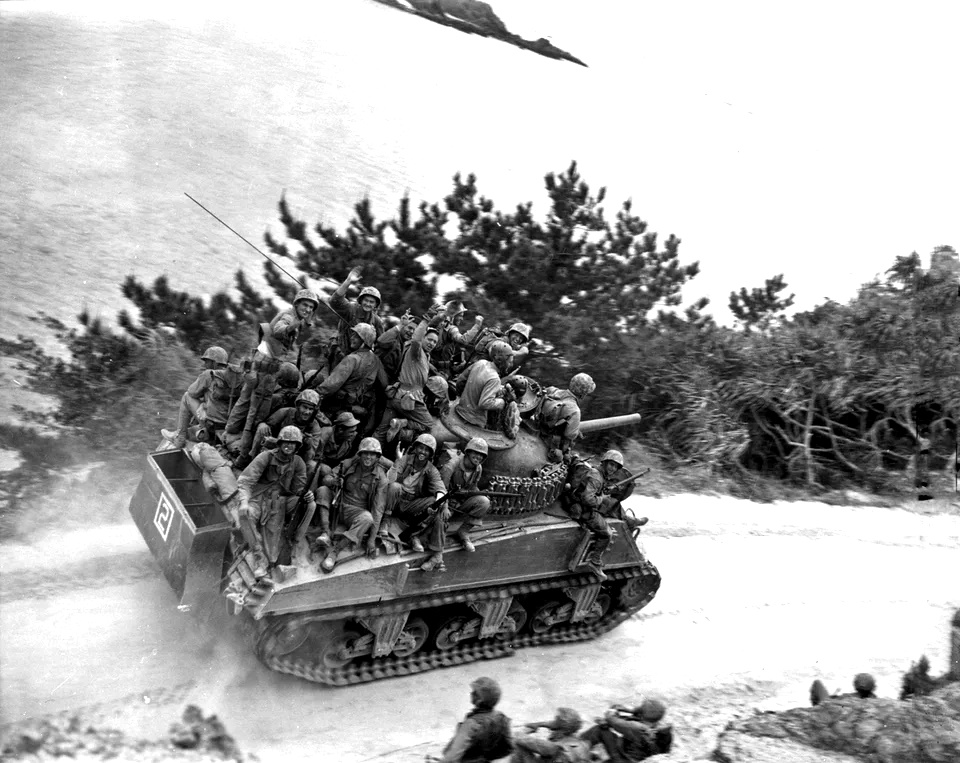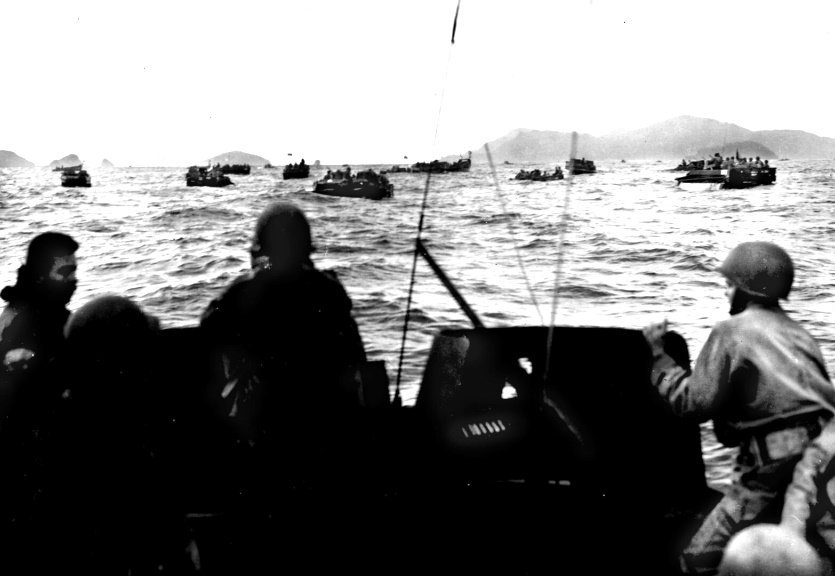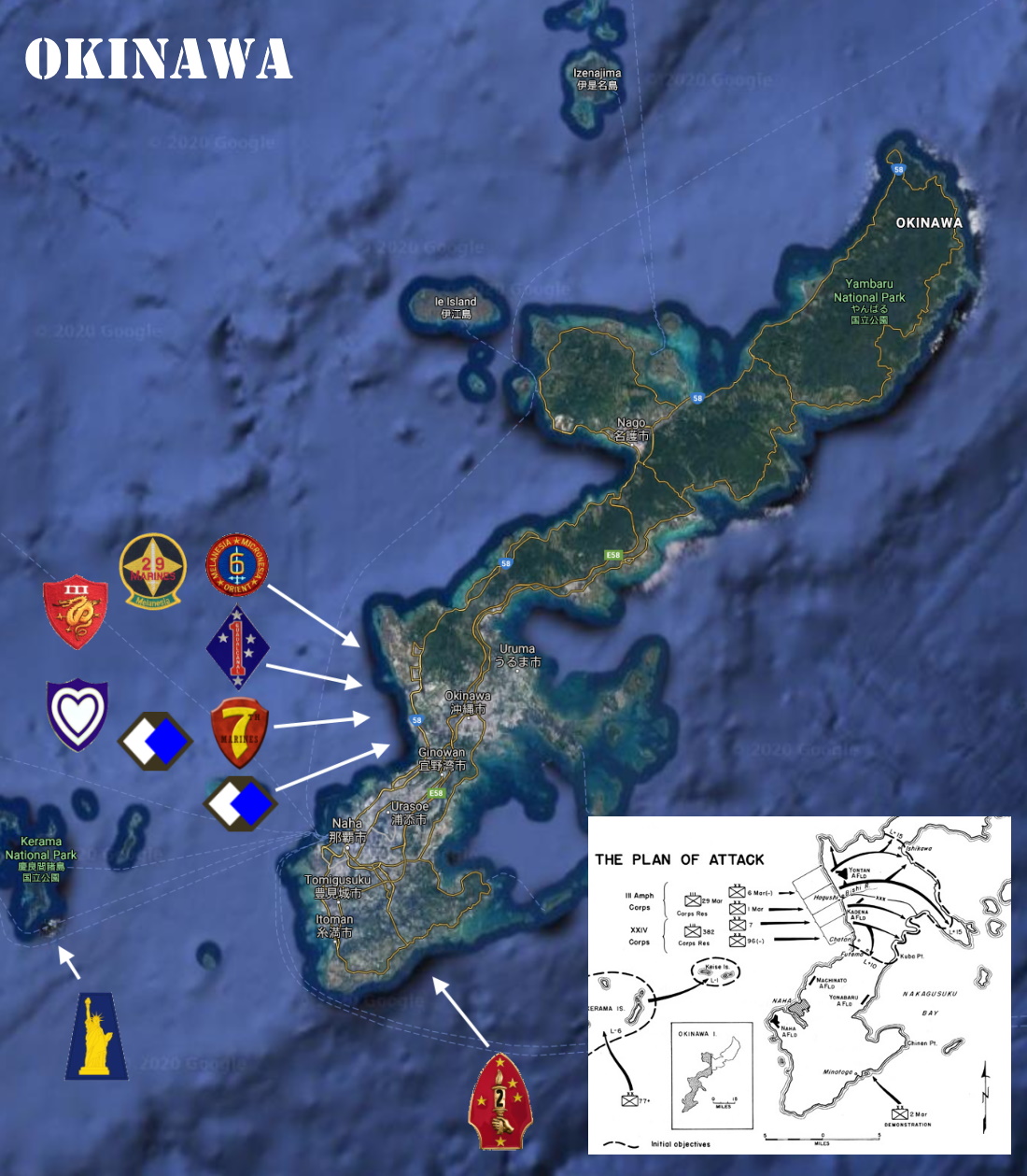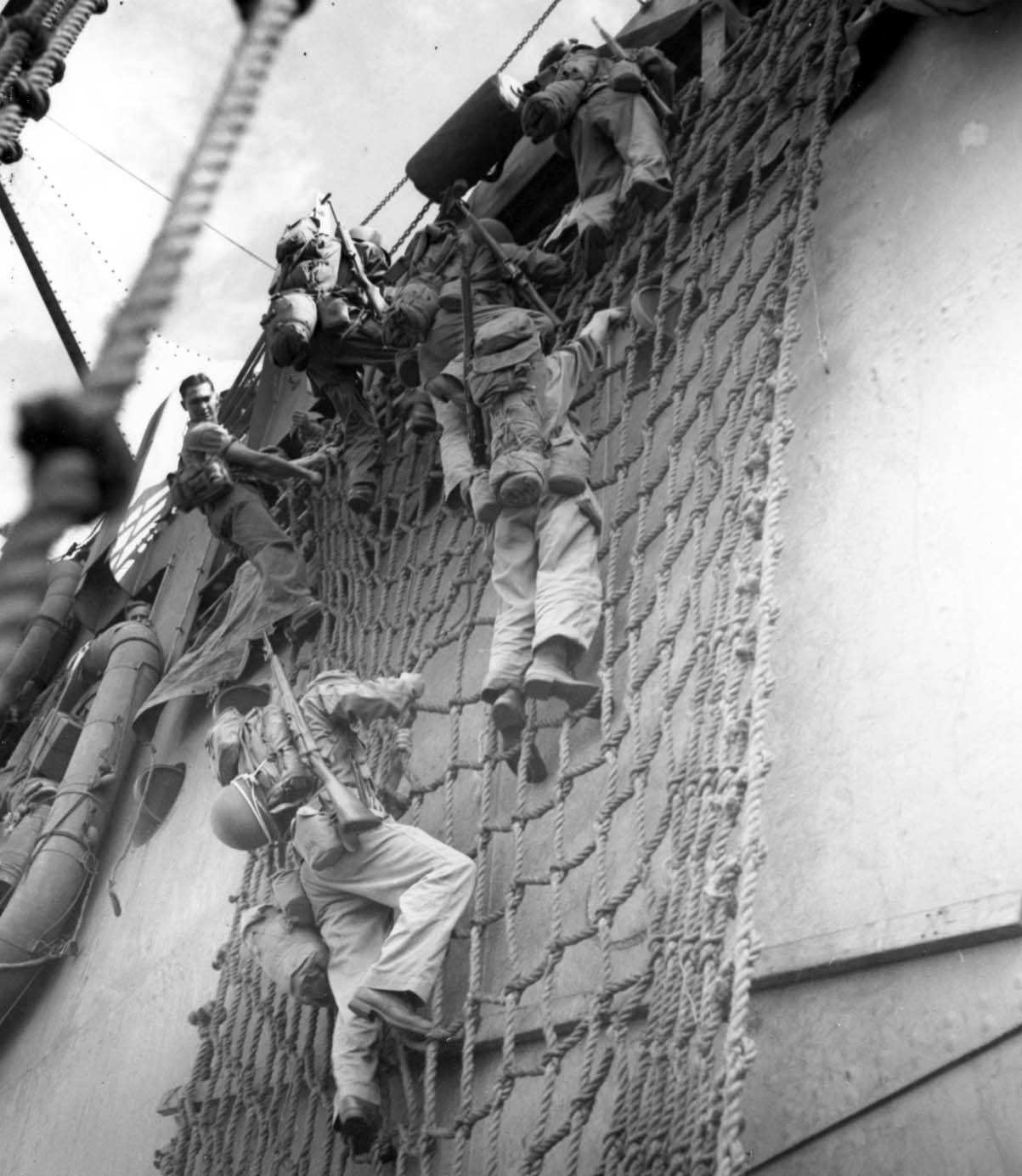(Document Source: Operations of the Gun Platoon, Baker Company, 1st Battalion, 29th Marine Regiment, 6th Marine Division, in Okinawa on the Ryukyus Islands, April 1, 1945 – April 18, 1945. Capt David W. Banks (Final Check: Doc Snafu, September 2022)
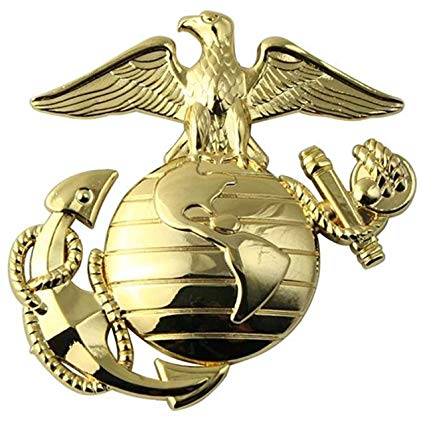
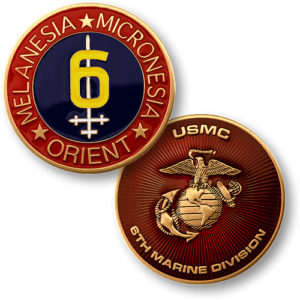 The war in the Pacific Theater, from Guadalcanal until the Philippine Islands, had progressed favorably for the US troops engaged therein. The huge squeeze movement, which started in the Solomon Islands, had resulted in slowly but surely pushing the Japanese off the various island groups. These, the Japs had, for the main part, occupied by a force of conquest. By March, the squeeze had embraced all the major groups excepting the Ryukyus, Formosa, and the Japanese Islands themselves. In view of this fact, it was then decided by higher headquarters that the time was ripe to start another campaign utilizing the joint and combined forces of the Army, Navy, Marine Corps, and Coast Guard. Unknown to those who ultimately fought this decision at least the major percentage of them Okinawa-Shima in the Ryukyus Group, just south of the main islands of Japan, was selected as the target.
The war in the Pacific Theater, from Guadalcanal until the Philippine Islands, had progressed favorably for the US troops engaged therein. The huge squeeze movement, which started in the Solomon Islands, had resulted in slowly but surely pushing the Japanese off the various island groups. These, the Japs had, for the main part, occupied by a force of conquest. By March, the squeeze had embraced all the major groups excepting the Ryukyus, Formosa, and the Japanese Islands themselves. In view of this fact, it was then decided by higher headquarters that the time was ripe to start another campaign utilizing the joint and combined forces of the Army, Navy, Marine Corps, and Coast Guard. Unknown to those who ultimately fought this decision at least the major percentage of them Okinawa-Shima in the Ryukyus Group, just south of the main islands of Japan, was selected as the target.

 The Tenth Army was the unit selected for this operation. The Third Amphibious Corps was the Marine Corps component of the parent unit, it was made up of the First, Second, and Sixth Marine Divisions, Pioneer, Engineer, Artillery, and other supporting units. Some twelve-hundred ships of the US Navy and US Coast Guard, the largest war fleet that ever sailed, were to support the landing of the Tenth Army. Consisting of the Fourth, Twenty-Second, and Twenty-Ninth Regiments, and supporting arms and services, the Sixth Marine Division was formed on the island of Guadalcanal, Solomon Islands, in Sep 1944. Both the 4th Regiment and the 22nd Regiment were combat experienced and the First Battalion of the 29th had distinguished itself in the bitter fighting on Saipan, where it was attached as a part of the First Provisional Marine Brigade.
The Tenth Army was the unit selected for this operation. The Third Amphibious Corps was the Marine Corps component of the parent unit, it was made up of the First, Second, and Sixth Marine Divisions, Pioneer, Engineer, Artillery, and other supporting units. Some twelve-hundred ships of the US Navy and US Coast Guard, the largest war fleet that ever sailed, were to support the landing of the Tenth Army. Consisting of the Fourth, Twenty-Second, and Twenty-Ninth Regiments, and supporting arms and services, the Sixth Marine Division was formed on the island of Guadalcanal, Solomon Islands, in Sep 1944. Both the 4th Regiment and the 22nd Regiment were combat experienced and the First Battalion of the 29th had distinguished itself in the bitter fighting on Saipan, where it was attached as a part of the First Provisional Marine Brigade.
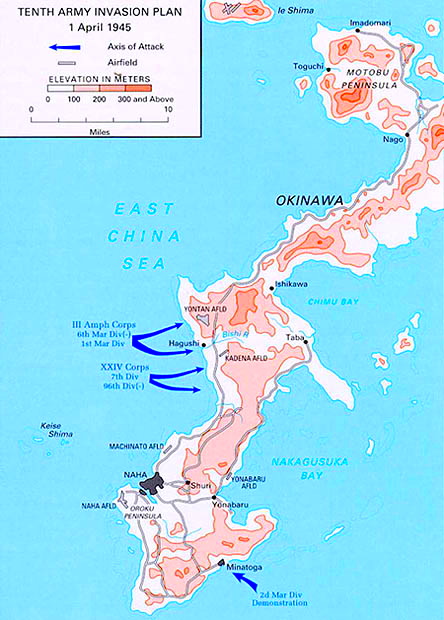 The Battalion was engaged in the fierce fighting for the strategic landmark, Mount Tapochau, which was taken only after heavy losses to those engaged in its capture. The two other battalions of the 29th were hand-picked, well-trained, and spirited personnel. It was amidst the settings of the first victories of World War II that the staging area was set for the continuance of the relentless attack on the Japanese Empire. There too, the 6-MD trained worked, studied, and finally became the well-coordinated fighting machine that was to assault the Japs on the island of Okinawa, in the Ryukyus Group. But, it was not until the troops were well aboard their ships and the 6-MD had sailed from the Canal, on Mar 15, 1945, that all hands were informed that the destination was to be Okinawa. The utmost secrecy had surrounded the entire training period so as to obtain the maximum surprise effect. Many of the men had speculated on the new target. Some suggested Formosa, others thought the northern Philippines, while the more pessimistic ventured the suggestion that the main islands of Japan might be the new operational area. So, on Mar 15, 1945, embarked aboard all types of modern combat sea-craft, the Division sailed from Guadalcanal. The 29-MR was combat loaded aboard APAs (Assault Personnel Transports), while the other excess supplies to be used for the continuous support were stowed aboard AKAs (Assault Cargo Ships).
The Battalion was engaged in the fierce fighting for the strategic landmark, Mount Tapochau, which was taken only after heavy losses to those engaged in its capture. The two other battalions of the 29th were hand-picked, well-trained, and spirited personnel. It was amidst the settings of the first victories of World War II that the staging area was set for the continuance of the relentless attack on the Japanese Empire. There too, the 6-MD trained worked, studied, and finally became the well-coordinated fighting machine that was to assault the Japs on the island of Okinawa, in the Ryukyus Group. But, it was not until the troops were well aboard their ships and the 6-MD had sailed from the Canal, on Mar 15, 1945, that all hands were informed that the destination was to be Okinawa. The utmost secrecy had surrounded the entire training period so as to obtain the maximum surprise effect. Many of the men had speculated on the new target. Some suggested Formosa, others thought the northern Philippines, while the more pessimistic ventured the suggestion that the main islands of Japan might be the new operational area. So, on Mar 15, 1945, embarked aboard all types of modern combat sea-craft, the Division sailed from Guadalcanal. The 29-MR was combat loaded aboard APAs (Assault Personnel Transports), while the other excess supplies to be used for the continuous support were stowed aboard AKAs (Assault Cargo Ships).
Although each of the units of the 1st Battalion had trained diligently, and as thoroughly as the rest of the regiment and was in the pink condition, there was no relaxing in training. This training did not, of course, include the type of work the men had performed in the staging area but were rather the informative type. Men were briefed as to what they could expect in this, the first conquest of a Japanese populated and inhabited land. The Intelligence reports which were relayed to the men gave the approximate number of natives as some 400.000, some excellent maps were handed out for the study of the types of terrain that could be expected.
The men were told that there were poisonous snakes on this next landing-step, among which was the deadly Habu. All hands shuddered at the report that leprosy was prevalent and that nearly all of the natives were infected with a type of diarrhea or one of many other kinds of diseases. Considerable interest was aroused in the report that the natives were an old civilization, but extremely primitive in their way of life. Such reports as the fact that the heaviest resistance of the entire Pacific Campaign was expected, because of the close proximity to the main Islands of Japan, was received with stern faces and tight lips. As a result of this last bit of news, all hands and the ship’s cook were prepared for the worst and knew in their hearts that this resistance would last from ‘Love Day’ until the last Jap was dead. Too many of the intelligence reports were quite hazy but were received with considerable eagerness. All of the men knew that there was a great lack of current information available and it was not unusual for the various platoon leaders to be confronted with the question: Any new dope, today? At last, the word was received by the Battalion commander, that ‘Love Day’ was scheduled to be Easter Sunday, Apr 1, 1945. A tenseness, octopus-like in its embracement, gripped all hands. This, being broken only by the semi-humorous remark: It’s April Fool’s Day, too. Wonder if we’ll get a big foolin!
Weapons were checked and re-checked. All other gear was carefully looked after to make sure it was in the right place for instant use. Each member of the combat team was as high spirited, yet grim, as a high spirited Purebred just before its first race.
THE GENERAL SITUATION
 The 3rd Amphibious Corps and the XXIV Army Corps were to attack abreast, on the west coast of the Island, directly opposite the two vital airfields, Yontan and Kadena. They were to seize and hold these points against all enemy resistance. The 3-AC, consisting of the 1-MD and the 6-MD was assigned the mission of taking and holding the Yontan Airfield. The 6-MD, on the north side of the sector of attack, was assigned Green Beaches, one and two, and Red Beaches, one, two, and three. The attack was to be made with the 4-MR and the 22-MR abreast, the 29-MR, and 382-IR (96-ID) being in Corps Reserve. The 4-MR on Red Beaches and the 22-MR on Green Beach. H-Hour, LOVE-DAY, was to be 0830. Each member of the Machine-Gun Platoon, Baker Co, 1/29 received the final attack with the stoicism which is prevalent in the average machine gunner.
The 3rd Amphibious Corps and the XXIV Army Corps were to attack abreast, on the west coast of the Island, directly opposite the two vital airfields, Yontan and Kadena. They were to seize and hold these points against all enemy resistance. The 3-AC, consisting of the 1-MD and the 6-MD was assigned the mission of taking and holding the Yontan Airfield. The 6-MD, on the north side of the sector of attack, was assigned Green Beaches, one and two, and Red Beaches, one, two, and three. The attack was to be made with the 4-MR and the 22-MR abreast, the 29-MR, and 382-IR (96-ID) being in Corps Reserve. The 4-MR on Red Beaches and the 22-MR on Green Beach. H-Hour, LOVE-DAY, was to be 0830. Each member of the Machine-Gun Platoon, Baker Co, 1/29 received the final attack with the stoicism which is prevalent in the average machine gunner.
With the receipt of the final attack order, there was also the issuance of the Battalion debarkation order. To explain in part, this is the order of attack as it refers to the individual units leaving the mother ship prior to landing on the beach, so arranged that no complete fighting unit is in any one small boat. There may be, for instance, one platoon of riflemen and a section of machine gunners assigned to one type of landing craft. Practice formations were held to ensure that each man on the ship knew exactly what boat he was to embark in, what time he was to come up to the top side, and on which side of the ship he was to take his place. Everything except the actual embarking was practiced. This had been practiced time and time again, while in the staging area. This drill, prior to an actual landing, makes for maximum efficiency, with a minimum of confusion. That latter detail is one of the prime factors to be considered in an amphibious operation. An excess of confusion and disorganization can definitely affect the proper, smooth, coordination of the fighting team as it prepares for its final action. One slip in the loading of the smallest vessel can unduly and unnecessarily heighten the anxiety of the men making the assault.
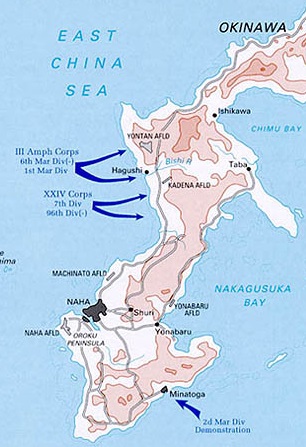 Baker Co’s Commander charged the machine-gun platoon leader with the responsibility of assigning the various sections of his platoon, so that a maximum of support was equally distributed throughout the company. A general plan was suggested by the MG Platoon leader and subsequently presented to the CO, for the suggested employment of the guns and the distribution of the various crews. The 1-MG Plat section, Sgt Cunningham, was to embark with their heavy machine guns, with the 1st Plat in boat number 26. The 2-MG Plat section, Cpl Bloometrahd, was assigned to the 2nd Plat. The 3-MG Plat, Cpl Greenstein, was in support of the 3rd Plat. Gunnery Sgt of the MG Plat, Gunnery Sgt Bagwell, along with two runners would accompany the CO in his boat. The MG Plat leader was told that he would be with the 2nd Plat in their vessel. Now that all arrangements were made and the personnel thoroughly briefed, we were ready for the operation.
Baker Co’s Commander charged the machine-gun platoon leader with the responsibility of assigning the various sections of his platoon, so that a maximum of support was equally distributed throughout the company. A general plan was suggested by the MG Platoon leader and subsequently presented to the CO, for the suggested employment of the guns and the distribution of the various crews. The 1-MG Plat section, Sgt Cunningham, was to embark with their heavy machine guns, with the 1st Plat in boat number 26. The 2-MG Plat section, Cpl Bloometrahd, was assigned to the 2nd Plat. The 3-MG Plat, Cpl Greenstein, was in support of the 3rd Plat. Gunnery Sgt of the MG Plat, Gunnery Sgt Bagwell, along with two runners would accompany the CO in his boat. The MG Plat leader was told that he would be with the 2nd Plat in their vessel. Now that all arrangements were made and the personnel thoroughly briefed, we were ready for the operation.
LOVE DAY – THE ATTACK
At Love minus three hours (0530), all hands were awake and listening to the battle as it got underway. To several of the new men, it was quite a thrilling experience to hear the naval gunfire as it lambasted the beach. Several of the earlier riggers saw the distant hills of Okinawa fade into obscurity as the five, eight (127-MM), fourteen (355-MM) and sixteen inches (406-MM) rifles of the navy blasted away at the supposed strongholds of the enemy on the rapidly disappearing beaches east of the ship. High in the sky, an occasional glimpse could be had of the Marine Aircraft Fighter Wing, as it dropped bombs throughout the sector of attack. A surprising number of the men aboard, marines that is, ate a hearty breakfast of steak and eggs with all the trimmings, while the preliminary strike was progressing. Even as late as H minus thirty minutes, some of the personnel, who were later to make the landing, were so unconcerned about the whole affair that they were playing a few last games of Acey-Ducey and cribbage. Perhaps it was a false air of braggadocio, who knows? Maybe it was only to hide their true feelings of nervous anxiety.
 Finally, at 0830, in the misty, smoke-filled distance, one could discern the activity of small boats leaving the parent ship, sailing a short distance, and then start the seemingly endless circling which precedes the final jumping off for the beach. Then, a long but staggered line of these boats headed for their assigned beach areas. Men along the safe lines wore quiet, thoughtful, and wondered what the near future held for those in the first wave. All hands tensely waited for the first reports to come to the ship. Then came the astounding and unbelievable news. Little or no enemy resistance on all beaches is proceeding inland toward Yontan Airfield.
Finally, at 0830, in the misty, smoke-filled distance, one could discern the activity of small boats leaving the parent ship, sailing a short distance, and then start the seemingly endless circling which precedes the final jumping off for the beach. Then, a long but staggered line of these boats headed for their assigned beach areas. Men along the safe lines wore quiet, thoughtful, and wondered what the near future held for those in the first wave. All hands tensely waited for the first reports to come to the ship. Then came the astounding and unbelievable news. Little or no enemy resistance on all beaches is proceeding inland toward Yontan Airfield.
At approximately 1000, (H+2), the word was received that the 22-MR, on the left flank of the Division sector had requested that the 2-MR be released from Corps Reserve and landed to protect their left flank area later known as Zampa Misaki Peninsula. So, at 1230, the 1/29 (not the entire regiment) was released from Corps and were landed at approximately 1500 on Love Day.
ACTION BEGINS FOR OUR MACHINE GUN PLATOON
Thus began the action of the MG Platoon, Baker Co, 1/29-MR. Upon hitting the beach under X low-hanging smoke clouds, it was observed that our own friendly tanks were maneuvering back and forth over the distant low hills and farmlands. Many airplanes could be seen in the vicinity of the Yontan Airfield and they were apparently engaged in blasting the enemy from stronghold positions. Black billowing clouds of smoke were heaviest over the airfield which had been overrun by H+1, while the 22-MR on the right had captured their objective by H+2, this being Castle Hill, and was actually the objective for Love plus two days. Without wasting one minute of the remaining daylight hours, the 1/29 rapidly reorganized, on the beach, and proceeded rapidly to the left flank of the 22nd Marines sector of action. Able Co on the left, Baker on the right, and Charlie Co in battalion reserve.
The 1st Platoon, Baker Co, with the 1st Machine Gun Section attached, occupied the right sector of the company front, the 2nd Platoon was assigned the left, and had the 2nd Section of Machine Guns attached. The 3rd Machine Gun Section was in company reserve with the 3rd Platoon, and the 60-MM mortars brought up the rear of the company. Moving rapidly for a D-(Love) Day speed, the company pushed north toward the extremity of the Zampa Misaki Peninsula. An order had been received, earlier, to drop and pile in a common dump all excess items of equipment such as gas masks, extra rations, and the heavy machine guns. It was thought that the heavies would be employed in the initial landing in the event that the operation went bad for the invading troops, thus they had been landed with the company. However, the lights followed closely and soon took the place of the heavier weapons in the rapid movement to follow.
 The movement up the peninsula was uneventful with very few enemies encountered in the battalion area of advance. This scattered few were quickly killed, and the company set up its defense for the night.
The movement up the peninsula was uneventful with very few enemies encountered in the battalion area of advance. This scattered few were quickly killed, and the company set up its defense for the night.
It was decided by the Company Commander that he would utilize the heavy machine guns which had followed the company in the jeep trailer. Accompanying the Company Commander on his recon of the area to be defended on this first night ashore, the machine gun platoon leader discovered that the main direction of possible assault of the position would come from the southeast, if at all. The company having been organized into a perimeter defense employed the guns on the flanks of the area to adequately cover the low rolling ground to the southeast. All twelve guns in the platoon were used. Six heavies and six lights.
Since there was not adequate personnel to man all of the guns the crews were of necessity cut down. So, there was a gunner, an assistant, and two ammunition supply personnel assigned to each. However, by the dawn of the second day, it was apparent that these elaborate plans had been futile in that there was no enemy in the immediate area. The heavy guns were re-loaded into the trailer and the company made plans to continue, with the battalion and rejoin the 22-MR inland.
Information was received on the morning of Apr 2, that during the night and morning both the 4-MR and 22-MR had met with resistance, suffering quite a few casualties and the advance of the division had been materially held up. Upon moving out from the area occupied during the 1st night, it was noticed that the terrain became rougher as progress was made toward the left flank of the 22-MR area of attack. This section extended inland from the small village of Nakadomari a distance of about a mile and a half.
The area assigned to the 1/29-MR was in an extremely mountainous, sparsely vegetated, deeply ravined section of the terrain. Reaching the assigned sector of defense in the late afternoon of Apr 2, another recon was made by the Company Commander accompanied by the mortar section leader and the machine gun platoon leader. The area to be defended was on the forward slope of quite a high hill, and well up on the side of this hill. A roadway wound about the base of the hill and climbed rather steeply up between two hill masses, the other being toward the north of the position. It was not only an avenue of approach, for the Japs from the northeast, but was also, the route used by the company in reaching the area. Battalion headquarters was established well up toward the crest of the hill, with Able and Charlie companies making up the remainder of the perimeter of defense for the night.











